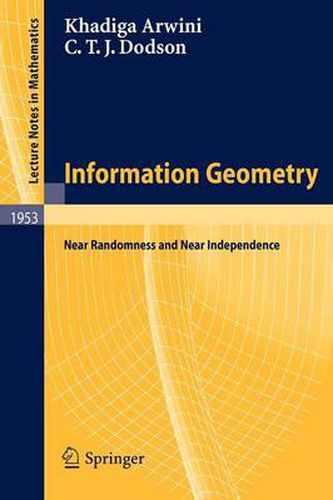Readings Newsletter
Become a Readings Member to make your shopping experience even easier.
Sign in or sign up for free!
You’re not far away from qualifying for FREE standard shipping within Australia
You’ve qualified for FREE standard shipping within Australia
The cart is loading…






This title is printed to order. This book may have been self-published. If so, we cannot guarantee the quality of the content. In the main most books will have gone through the editing process however some may not. We therefore suggest that you be aware of this before ordering this book. If in doubt check either the author or publisher’s details as we are unable to accept any returns unless they are faulty. Please contact us if you have any questions.
The main motivation for this book lies in the breadth of applications in which a statistical model is used to represent small departures from, for example, a Poisson process. Our approach uses information geometry to provide a c- mon context but we need only rather elementary material from di?erential geometry, information theory and mathematical statistics. Introductory s- tions serve together to help those interested from the applications side in making use of our methods and results. We have available Mathematica no- books to perform many of the computations for those who wish to pursue their own calculations or developments. Some 44 years ago, the second author ?rst encountered, at about the same time, di?erential geometry via relativity from Weyl’s book [209] during - dergraduate studies and information theory from Tribus [200, 201] via spatial statistical processes while working on research projects at Wiggins Teape - searchandDevelopmentLtd-cf. theForewordin[196]and[170,47,58]. H- ing started work there as a student laboratory assistant in 1959, this research environment engendered a recognition of the importance of international c- laboration, and a lifelong research interest in randomness and near-Poisson statistical geometric processes, persisting at various rates through a career mainly involved with global di?erential geometry. From correspondence in the 1960s with Gabriel Kron [4, 124, 125] on his Diakoptics, and with Kazuo Kondo who in?uenced the post-war Japanese schools of di?erential geometry and supervised Shun-ichi Amari’s doctorate [6], it was clear that both had a much wider remit than traditionally pursued elsewhere.
$9.00 standard shipping within Australia
FREE standard shipping within Australia for orders over $100.00
Express & International shipping calculated at checkout
This title is printed to order. This book may have been self-published. If so, we cannot guarantee the quality of the content. In the main most books will have gone through the editing process however some may not. We therefore suggest that you be aware of this before ordering this book. If in doubt check either the author or publisher’s details as we are unable to accept any returns unless they are faulty. Please contact us if you have any questions.
The main motivation for this book lies in the breadth of applications in which a statistical model is used to represent small departures from, for example, a Poisson process. Our approach uses information geometry to provide a c- mon context but we need only rather elementary material from di?erential geometry, information theory and mathematical statistics. Introductory s- tions serve together to help those interested from the applications side in making use of our methods and results. We have available Mathematica no- books to perform many of the computations for those who wish to pursue their own calculations or developments. Some 44 years ago, the second author ?rst encountered, at about the same time, di?erential geometry via relativity from Weyl’s book [209] during - dergraduate studies and information theory from Tribus [200, 201] via spatial statistical processes while working on research projects at Wiggins Teape - searchandDevelopmentLtd-cf. theForewordin[196]and[170,47,58]. H- ing started work there as a student laboratory assistant in 1959, this research environment engendered a recognition of the importance of international c- laboration, and a lifelong research interest in randomness and near-Poisson statistical geometric processes, persisting at various rates through a career mainly involved with global di?erential geometry. From correspondence in the 1960s with Gabriel Kron [4, 124, 125] on his Diakoptics, and with Kazuo Kondo who in?uenced the post-war Japanese schools of di?erential geometry and supervised Shun-ichi Amari’s doctorate [6], it was clear that both had a much wider remit than traditionally pursued elsewhere.